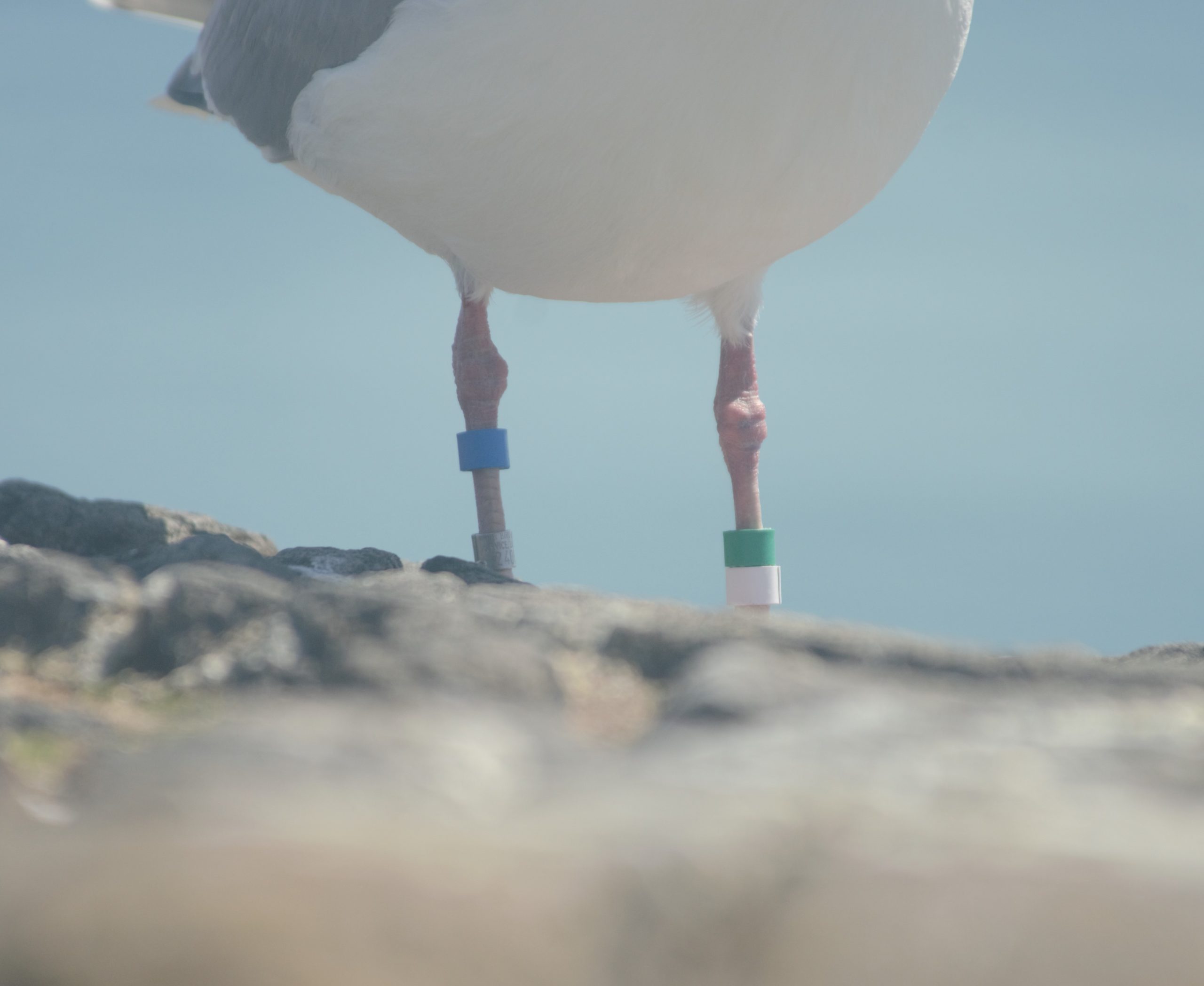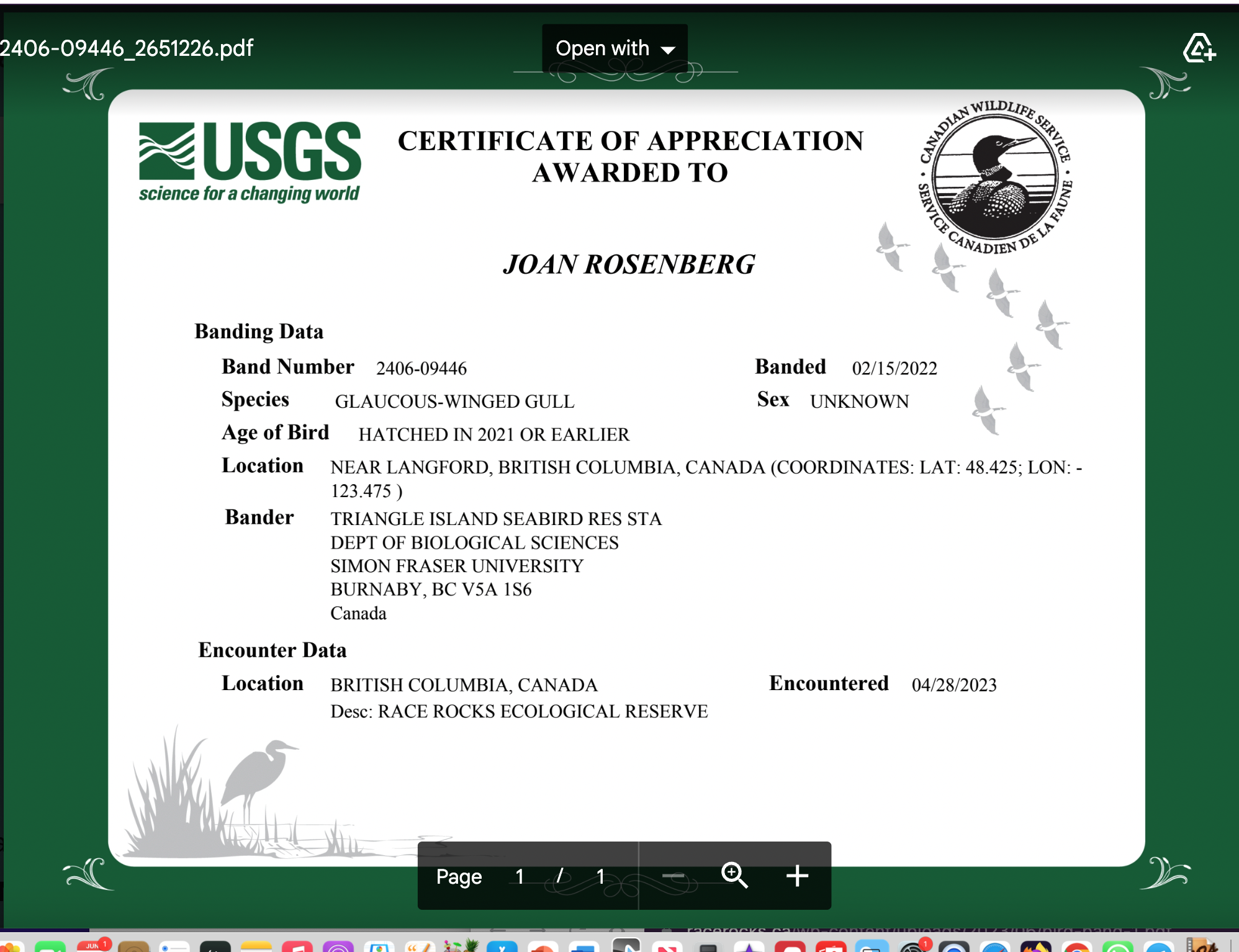It’s hard to believe a week has flown by! The boat took me back to the “big island” shortly after 2 pm, but there was still plenty of time before they arrived to have an exciting moment. Daniel Donnecke from Rocky Point Bird Observatory persuaded me to do one last seawatch this morning, once again apparently showing that the birds that fly past Beechey Head do not come close by Race Rocks on their voyage east. It’s likely that they move across the strait over to the American side. It may be wind dependent, but we had no correlation at all the three days we did seawatches at the same time.
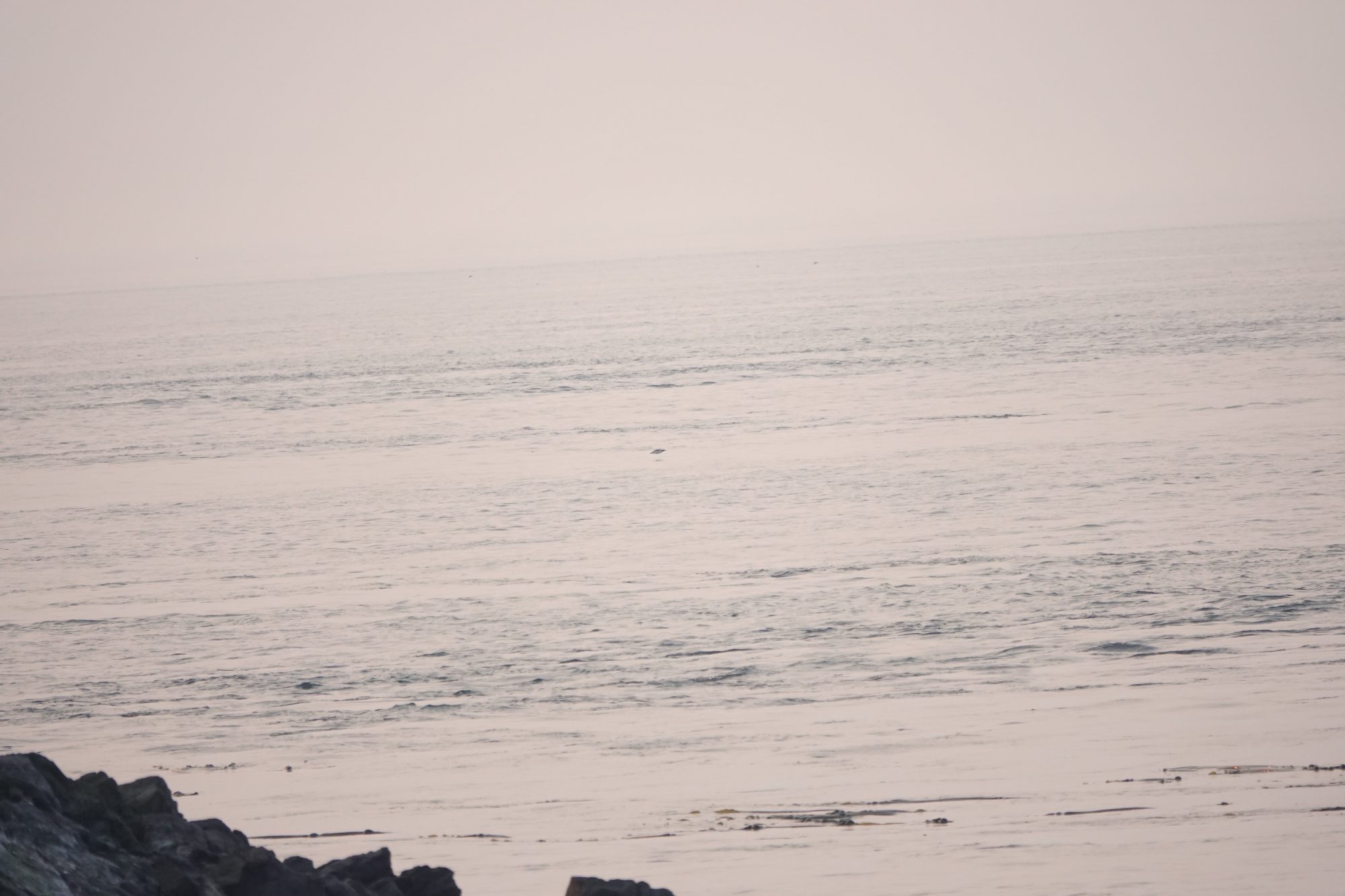
Seawatch is a fancy term for trying to identify little specks at the limit of your visual range. This is a Common Murre.
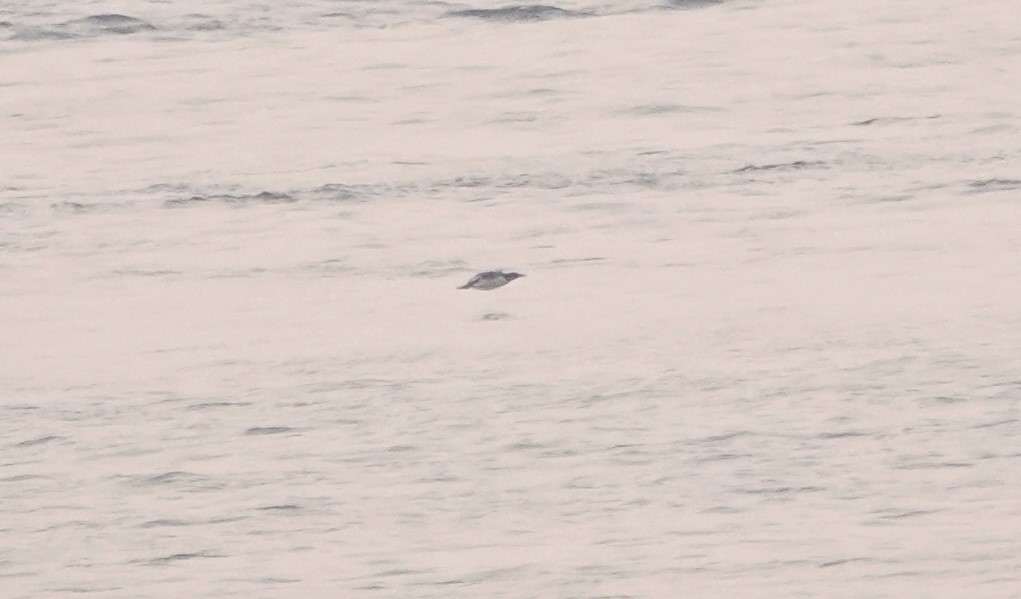
I cleaned the solar panels for the last time this week. The gulls had been pretty reasonable the last couple of days except for that one section where it was bad every day.
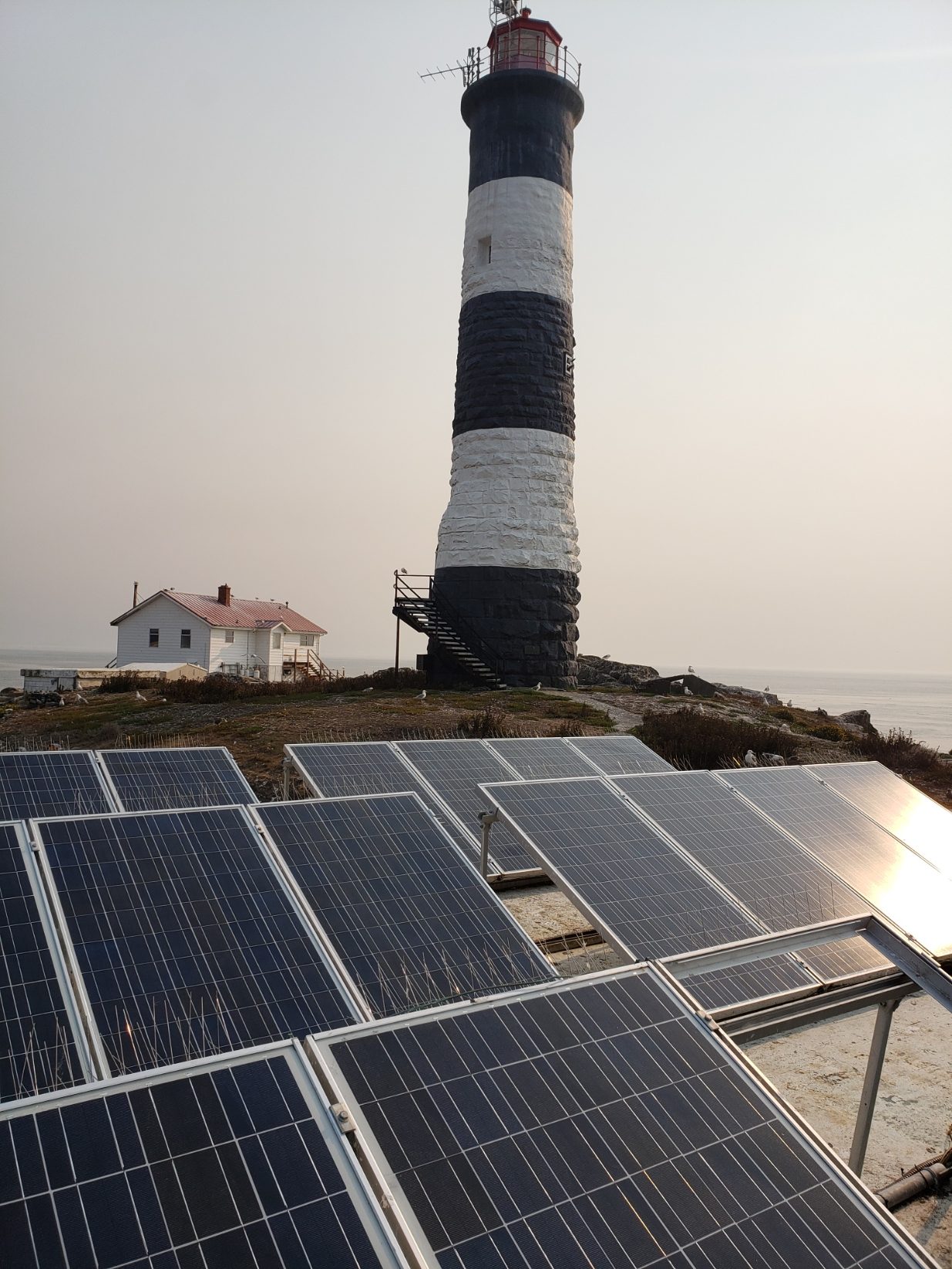
Sparkling clean!
There were several other things to get done to prepare for my departure and Greg’s arrival, but I had plenty of time. That is I had plenty of time until I turned the corner towards the house and saw a songbird on the ground. There had only been a Song Sparrow and one or more Brown-headed Cowbirds on the island all week as far as passerines went, so this was good. And it got better when I realized the bird was a Yellow-headed Blackbird, an uncommon bird for Victoria. Normally, my camera is on my shoulder, but since I had been cleaning the solar panels, it was back at the generator building. I did have my phone with me, though, so I snapped a quick couple of documentation shots. They were really bad, but showed some of the diagnostic features for the species. By the time I got back with the camera, the bird was gone. That just seemed weird, as normally a bird that lands on offshore islands does so because it needs to refuel. I looked all around, but no luck. So I climbed the tower and searched the whole island from up there. Still no luck, so I came down and continued with my tasks. About two hours later, I looked out the window, and there it was!
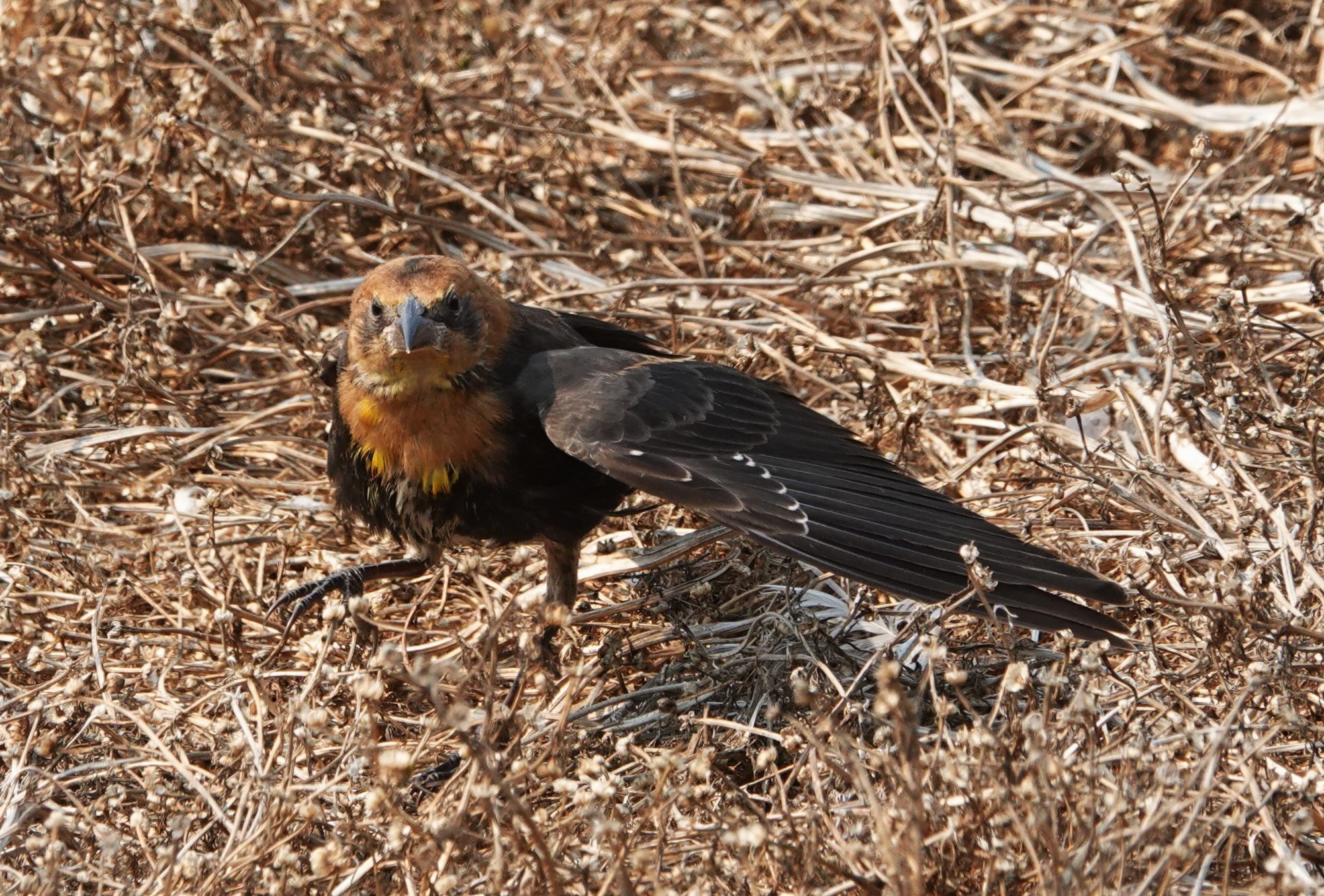
Nice of him to stretch out a wing so you can see the white edges on the primary coverts.
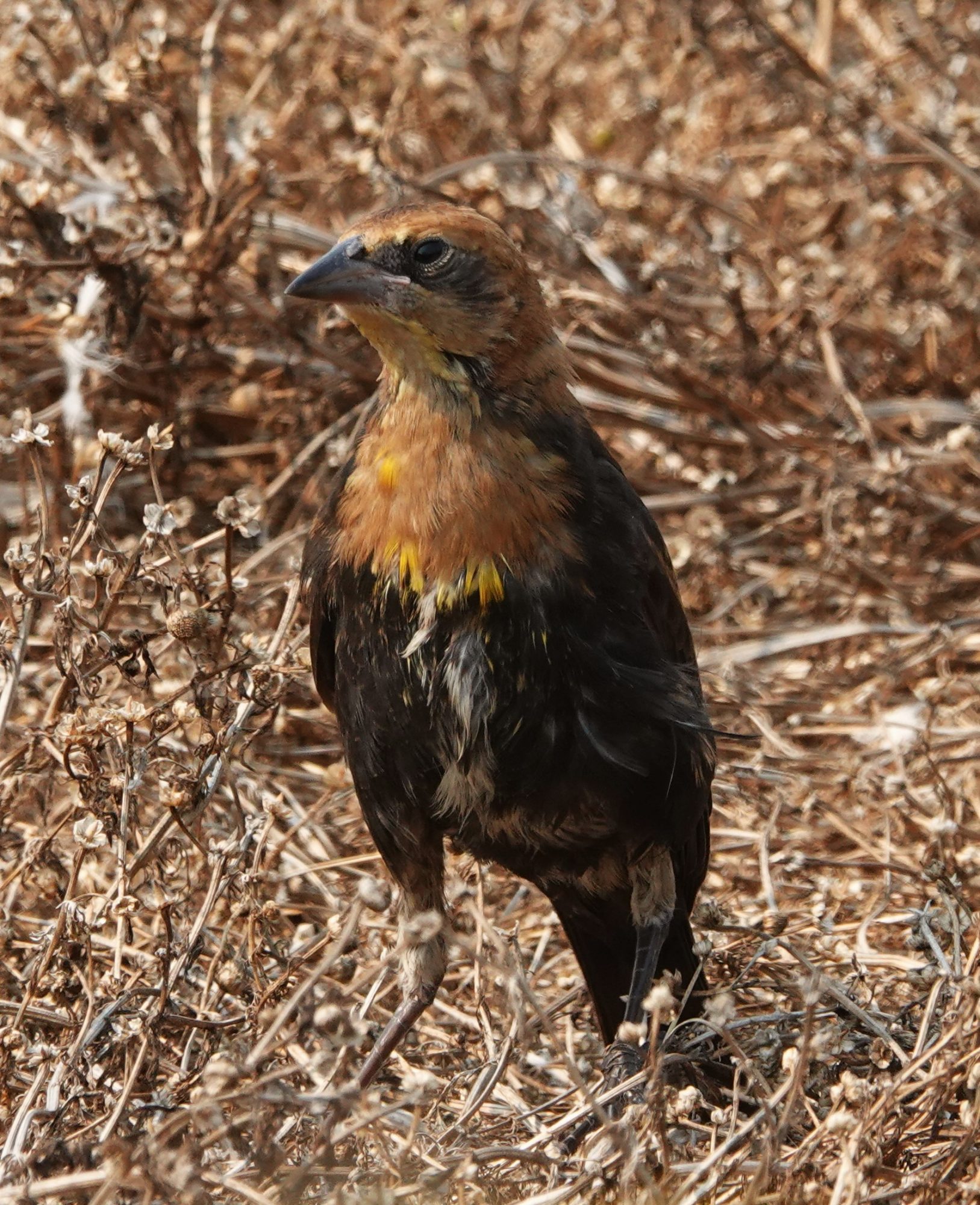
Yellow-headed Blackbirds are common in the BC Interior. It’s possible that the smoke may have moved him to the coast.
I probably took 400 shots to make sure I got a few good ones. The time I took following him around, though, cut my packing and cleaning time down. I was just barely finished when the marine radio call came from the Second Nature that Greg and Jeff were only a few minutes away.
Greg’s stuff was unloaded and mine loaded, and before you knew it, we were headed back to Pearson College, leaving Greg on the dock-an unusual situation for him!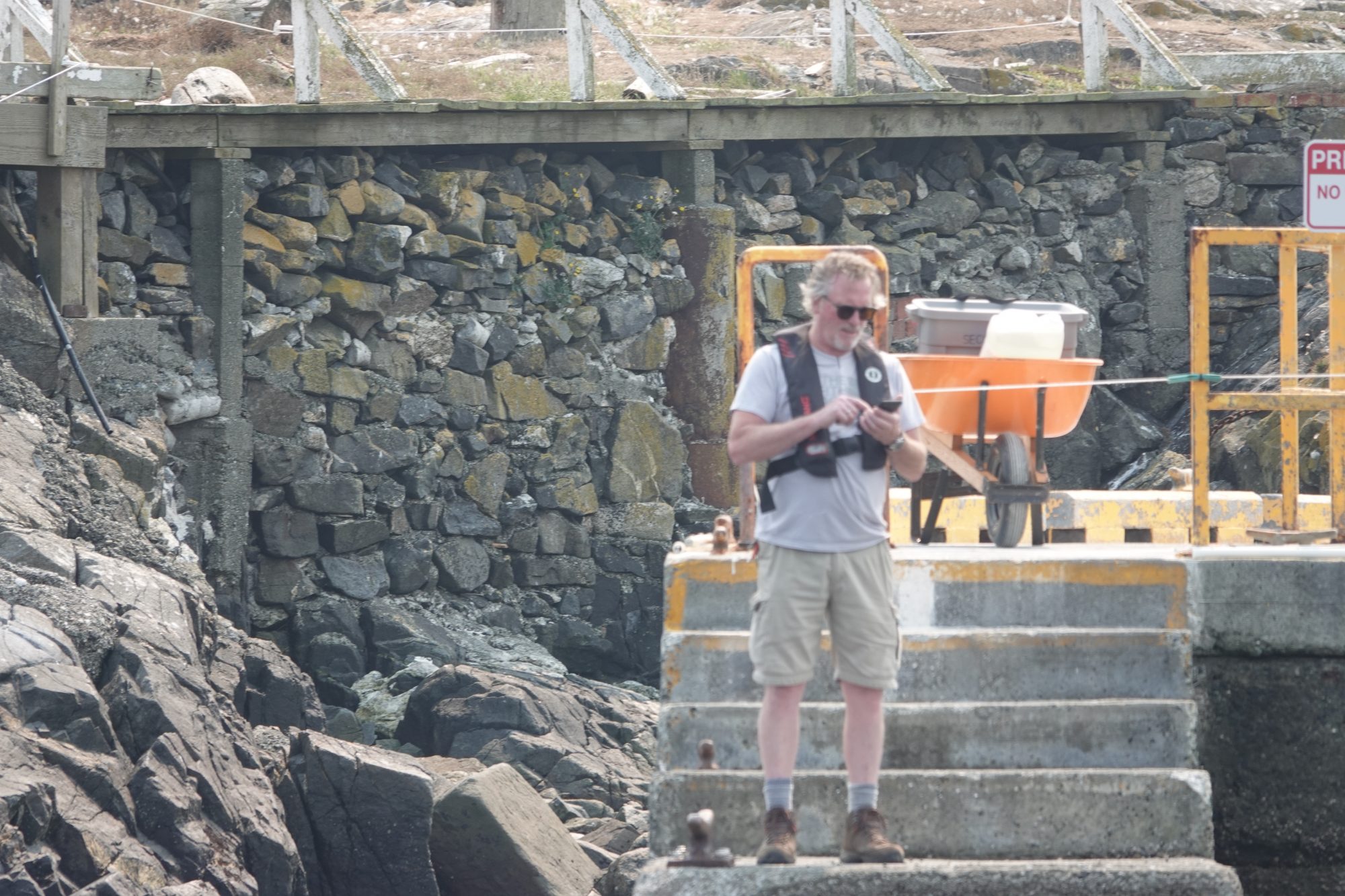
It’s been an amazing week, and I’m grateful to the folks at Pearson College for allowing me to serve as the relief Eco-guardian this week. I hope that I will get the chance to do this again!
Ecological Notes:
Mammals
1 Humpback Whale
2 Harbour Porpoise
Steller’s Sea Lion
California Sea Lion
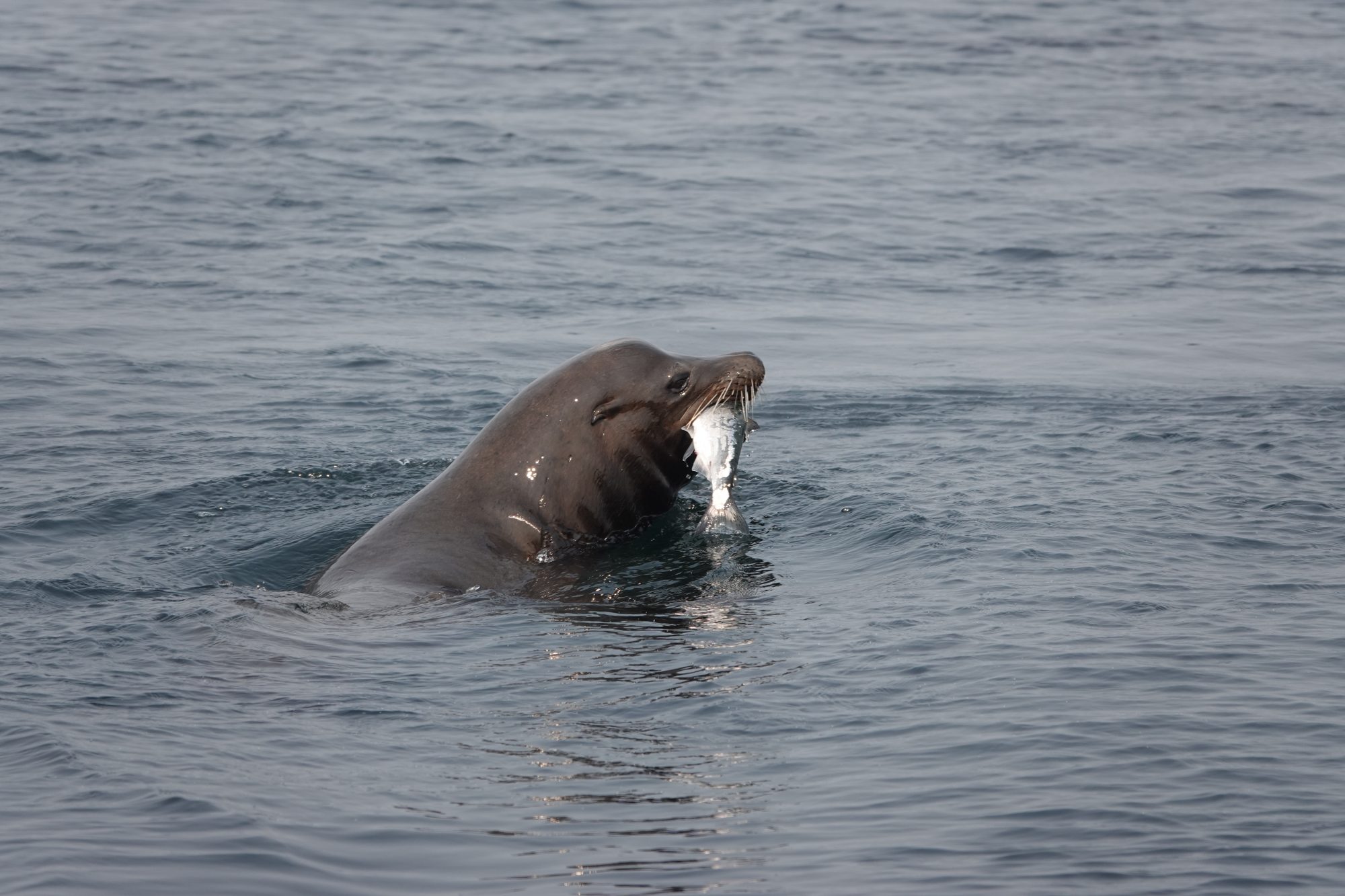
Successful fishing!
Harbour Seal
Birds
5 Black Oystercatcher
10 Black Turnstone
41 Common Murre
65 Pigeon Guillemot
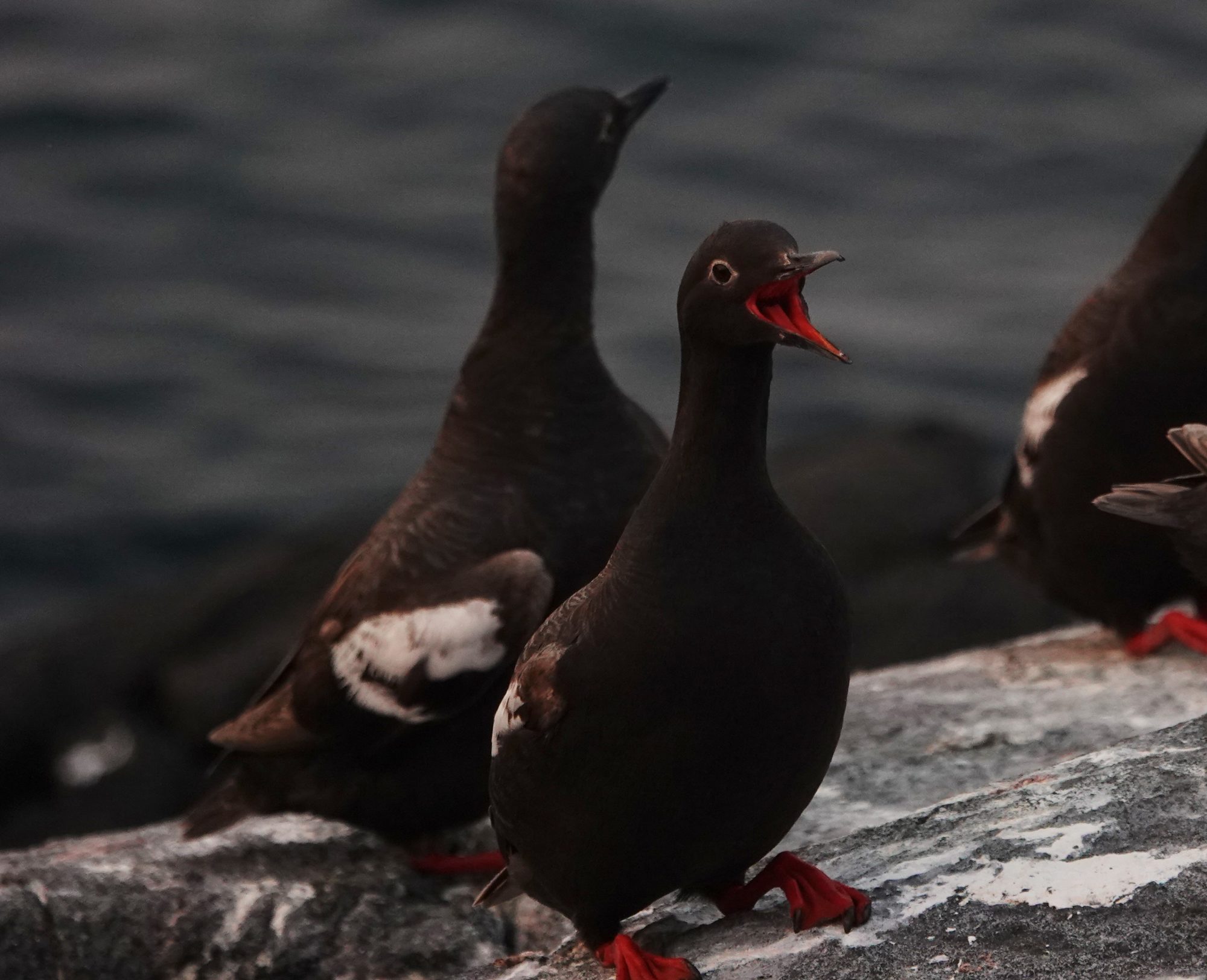
When in breeding plumage, the linings of the their mouths are as red as their feet.
6 Rhinoceros Auklet
1 Heermann’s Gull
60 California Gull
700 Glaucous-winged Gull
3 Pelagic Cormorant
15 cormorant sp.
1 Song Sparrow
1 Yellow-headed Blackbird
Facility Work: Cleaned all the solar panels and the dirty windows
Vessel Traffic: Shipping lanes were busy again today. Several whale-watching boats ad 2 private fishing boats came by for the sea lions (which they saw) and the elephant seal (which they didn’t).
Weather – Current: http://www.victoriaweather.ca/current.php?id=72
Weather – Past: http://www.victoriaweather.ca/station.php?
